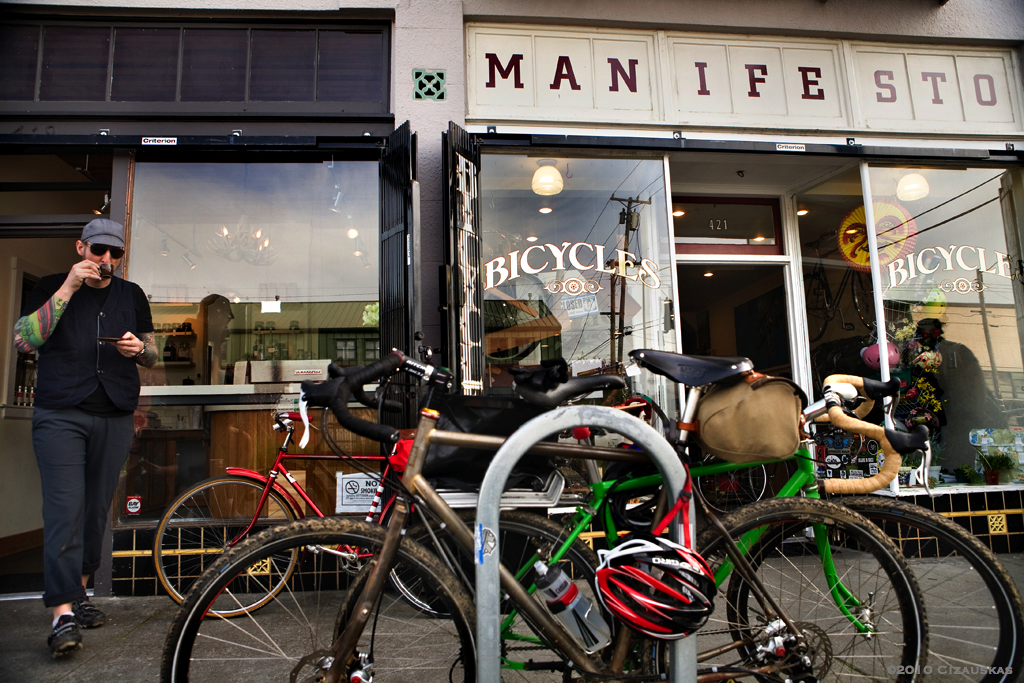It was an urbanist’s nightmare. On Feb. 1, a teenager was shot dead in the middle of a popular art gallery walk and street fair in Oakland, Calif. — a town that highlights exactly what a city wins and loses when it attracts a huge influx of the vaunted “creative class.”
Kiante Campbell, an 18-year-old Oakland resident, was killed in the shadow of new condominiums, gourmet food trucks, and buffed art galleries selling oil paintings that cost more than a few months’ rent in the ’hood. The festival, Art Murmur, shuts down much of Oakland’s downtown on the first Friday of each month, drawing 20,000 people, including tourists from both San Francisco and the surrounding suburbs. Now its future was called into question.
The shooting highlighted a stark reality: The creative class is remaking Oakland in its own image, but the “urban renaissance” isn’t benefitting everyone. The neighborhood where Campbell was killed has new condos and galleries — and a median household income of less than $22,000.
By the urbanist creative-class metric, Oakland is winning. It’s a top city for urban farmers, local organic gourmet food snobs (love you, food snobs!), cyclists, and art-lovers. It’s home to a growing number of imported young makers, tech start-ups, and rising artists, in large part because of its close proximity to San Francisco and Silicon Valley. At the same time, about 13 percent of Oakland residents are unemployed, and the city still has one of the highest murder rates in the nation, especially for teens.
For years, Richard Florida and other urban life pundits have espoused the creative class as the secret to city success. When the creative class wins, their logic goes, we all win. Gentrification has essentially become America’s favored urban redevelopment strategy.
Florida has acknowledged that the rise of the creative class can exacerbate urban class divides, but his new research highlights just how big those divides can be.
For a recent piece at Atlantic Cities, Florida and others researched metro populations, wages, and amenities and compared how cities coped with their respective creative classes. The result, Florida wrote:
On close inspection, talent clustering provides little in the way of trickle-down benefits. Its benefits flow disproportionately to more highly-skilled knowledge, professional, and creative workers whose higher wages and salaries are more than sufficient to cover more expensive housing in these locations. While less-skilled service and blue-collar workers also earn more money in knowledge-based metros, those gains disappear once their higher housing costs are taken into account.
Those gains disappear. I couldn’t believe it the first time I read it. In his 2002 book, The Rise of the Creative Class, Florida said that the creative class would lead economic growth over the next decade, creating millions of jobs and promoting a new kind of “street level culture” around loafy café and art gallery life. Florida still stands by this argument, but acknowledges that it comes with a downside. “The knowledge economy powers growth and generates class and geographic inequality at the same time,” he wrote in an email.
Florida’s solution to this problem is to create political pressure on companies to raise wages for service jobs. That sounds nice, but it’s kind of a fantasy. In Oakland, a “living wage” for a single adult would be $11.51, closer to $20 if you have kids, but service jobs in Oakland typically pay around $9-10. When Oakland tried to create this kind of pressure with living wage regulations, a chain grocery store that had planned to open in the city’s west district “food desert” just scrapped its plans, and those jobs, altogether.
Other urbanists acknowledge that the urban renaissance can exacerbate class divides. Here’s Kaid Benfield at the NRDC’s Switchboard blog:
[G]entrification — the movement of more affluent residents into previously poor neighborhoods — doesn’t have to be all bad. Some neighborhoods benefit from it, as do municipal tax rolls. But the issue gets much more dicey if a community loses all its affordable housing and displaces longtime residents who had achieved a degree of stability.
Dicey indeed — particularly in the age of climate change. The stable, resilient, connected neighborhoods that make up our social infrastructure are arguably as important as actual infrastructure for surviving crises of all kinds — you know, like the ones we’re probably going to see many more of in the near future. Here’s sociologist Eric Klinenberg talking to NPR last month:
We always talk about the physical engineering that we need to protect cities, and systems and people during crises. We have failed to recognize the significance of our social infrastructure, the way in which communications matters, the way in which our relationships with neighbors, and family and friends matters; the way in which our neighborhood can protect or imperil us, depending on where we are. … [W]hen a real disaster strikes, it’s the social stuff that might make the difference between life and death.
In the wake of Hurricane Sandy, it was the local, grassroots social infrastructure that dug much of New York City out of disaster while FEMA, the Red Cross, and other large operations scrambled.
Likewise, in Oakland, the community banded together when the 1989 Loma Prieta earthquake sent an elevated freeway crumbling to the ground, killing 42 people. Local residents pulled the injured from the wreckage and supported one another in the aftermath.
Today, the West Oakland neighborhood where the freeway collapsed is dense with artist lofts, condo construction, and empty, foreclosed homes of the people who couldn’t keep up. Many of those homes have been bought up by investors who either rent them out at inflated prices, or leave them empty, waiting for the real estate market to make it worth their while to rehab and resell.
Despite, and to some degree because of, the rise of the creative class, West Oakland’s social infrastructure is likely as damaged now as its concrete was in 1989. This is not a recipe for success.
“If you want to live in this city, then you have to help us deal with this dilemma,” writes local blogger Lukas Brekke-Miesner of Oakland’s safety problems. “You can’t ignore this away. You can’t gentrify it away.”
The so-called “urban renaissance” brings some great sandwiches and microbrews, and I love bike lanes as much as anyone, but the creative class is not a solution for creating community in the face of crisis.
Coming later this week: What a real urban renaissance looks like — a profile of the new collaborative Respect Our City movement that aims to revitalize Oakland from the streets up.




